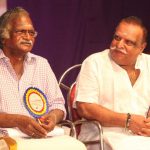News Briefs | In Memoriam
Fali S Nariman (1929-2024): The Guardian of Constitutional Democracy
Nariman did much more to further the cause of liberty than many others after him. In 1972, he was appointed additional solicitor general. Instead of clinging to that office, Nariman quit when his conscience would not allow him to hold that position anymore
 Siddharth Singh
Siddharth Singh
 Siddharth Singh
23 Feb, 2024
Siddharth Singh
23 Feb, 2024
![]()
Fali S Nariman (1929-2024) (Photo: M Zhazo)
FALI SAM NARIMAN BEGAN practising law 10 months after the Constitution of India came into force. Trained in the chambers of Sir Jamshedji Kanga, the legendary lawyer from Bombay, Nariman witnessed the ups and downs of India as a constitutional democracy in a career that spanned nearly three-quarters of a century. He was an active participant in many of those events.
If a contemporary observer were to sum up his decades at the bar, he would probably say that the first quarter century (1950-1975) was happy, the second quarter century (1975- 2000) a golden period—when the Indian judiciary came out of the executive’s shadow—and the last 25 years, one of tension and foreboding. It is unlikely that Nariman would have agreed to such a classification.
When Nariman began his career, the first seeds of institutional conflict between the judiciary and the executive had already been planted. Barely six months after being called to the bar, in May 1951, the first amendment to the Constitution whittled down the scope of Fundamental Rights. The amendment was challenged in the same year but the Supreme Court ruled in favour of the government. With that case, Shankari Prasad, began a see-saw game between two wings of the state that culminated in Kesavananda (1973) that supposedly saved Fundamental Rights and other precious liberties from the clutches of the executive. In one of those famous cases, Golaknath (1967), Nariman was a junior counsel.
In this age, the “right to dissent” is considered supreme and the judiciary is considered an answer to “majoritarianism”. From that perspective, the momentous cases of Nariman’s time are considered the bulwark against “executive aggrandisement”, and the “basic features” doctrine the lynchpin that holds it all together.
Nariman would have none of it. In his memoirs, Before Memory Fades: An Autobiography, he wrote, “In asserting the basic structure theory, the Supreme Court of India has, in this sense, asserted political power—in the guise of judicial interpretation. That is why there are so many critics of the basic structure theory. By propounding it, the guardians of the Constitution had at one bound become guardians over the Constitution. It must be admitted that the criticism is valid. But equally valid is the stark fact that Parliament in its wisdom has not sought any confrontation. If it had, the casualty would have been the Supreme Court.”
That single paragraph explains much more than hundreds of tomes that have been written on the subject. Today’s liberal lions, who praise Nariman to high heavens, are loath to admit what he wrote: when the Supreme Court confronts the other organs—Parliament and the executive—it acts as a political organ. The last line—if Parliament were to seek confrontation, then the casualty would be the Supreme Court—is equally true but that, too, is something our “defenders of freedom” refuse to see.
In real life, Nariman did much more to further the cause of freedom and liberty than many others after him. In 1972, he was appointed additional solicitor general (ASG). Unlike the present day when there is an army of ASGs, at that time, there were only three senior law officers: the attorney general, the SG, and ASG. Instead of clinging to that office, Nariman quit when his conscience would not allow him to hold that position anymore. That was in June 1975 when Indira Gandhi imposed the Emergency. He paid the price. All of a sudden, no one would rent him a house in Delhi and people who had professed friendship to him and his family suddenly wanted to avoid him. In the end, he found a home when the Sikh writer Patwant Singh offered him rented accommodation.
While devoted to the law, freedom, and fairness, Nariman could see through the limitations of institutions. In his dissection of the notorious ADM Jabalpur vs. Shukla case (1976), he said, “Historians of the Supreme Court will doubtless record that it was only in the post-Emergency period [not during the Internal Emergency of June 1975-March 1977] that the highest court gave vent to expressions of grave concern about violations of human rights! A sobering thought for human rights activists—and for judges and lawyers.” He had an equally trenchant opinion about the president, supposedly the guardian of the Constitution, who signed the decree of Emergency: “I have always thought that Article 352(3), as amended on 20 June, 1979, was an avowed expression of parliamentary distrust of India’s highest functionary—the President.” Article 352(3) makes it mandatory that any decision of the Union Cabinet to impose Emergency be communicated in writing to the president before he issues a proclamation to that effect. Unlike the present-day believers of ‘institutional order’, he knew how institutions could crumble quickly when the wind turns its direction against freedom and liberty.
It is not surprising that Nariman was critical of the Supreme Court’s judgment in the Article 370 case where it upheld the presidential order making that article inoperative from August 5, 2019. Last December, he wrote, “My conclusion, therefore, is that the present decision of the Supreme Court, even if politically acceptable, is not constitutionally correct.” These were the words of a strict constitutionalist who had seen the destruction of the constitutional order in the 1970s and not a partisan who was opposed to the government of the day. Those memories never really left him. What did change was the time: India’s institutional order—from the press to the courts and, most importantly, its citizens—is much more robust and is unlikely to collapse. Those fears were a product of the peculiar circumstances of the 1970s.
It would be too strong a statement to say that we are unlikely to see the combination of qualities that he represented. But in our age, humanity, legal acumen, and belief and practice of constitutional values are like an impossible trinity: one sees these qualities in abundance when viewed singly; they are rare when two are present in the same individual, but are exceedingly rare to obtain in a single person. It is also unbecoming to be mawkish about those decades after freedom when India boasted scores of legal luminaries like Nariman, CK Daphtary (the first solicitor general) and Motilal Setalvad (the first attorney general), and many more. But when one hears and reads the stories of that age—when Kanga helped a struggling MC Chagla in a personal case when Jinnah refused him help or when Setalvad could stare at nine apex court judges in a landmark case, with one hand in his pocket, and exclaim, “Are there any questions that I have to answer?” and the nine lordships could not ask any question—one is bound to be awestruck.
Our times are more democratic when both talent and opportunities have spread across a wider sector of the citizenry, and perhaps that is one reason why that time and the persons who lived then appear more luminous and more exalted. But it was people like Nariman who forged the path to the present even if he never claimed any special credit for that. His was a life led with care, diligence, and honour.
/wp-content/uploads/2024/02/Fali.jpg)

/wp-content/uploads/2025/01/Cover-Indian-Music.jpg)











More Columns
Israel-Hamas Ceasefire: Five things to watch out for in the days to come Rahul Pandita
Trump’s First Day at Work Siddharth Singh
What Are the Natural Solutions for Acidity and Bloating Dr. Kriti Soni